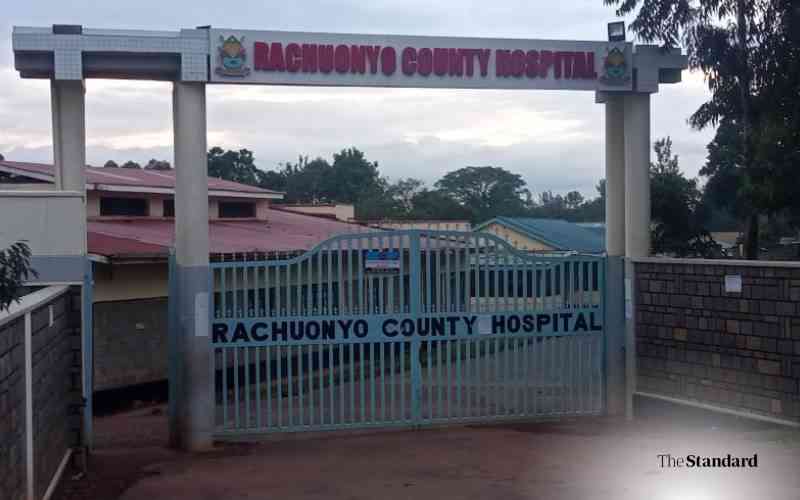Harnessing primary healthcare to reduce the burden of cervical cancer in the Eastern Mediterranean Region
Cervical cancer remains a significant public health challenge in the WHO Eastern Mediterranean Region (EMR), with significant implications for women’s health and sustainable development. Despite being largely preventable, the EMR reported high prevalence of new cases and deaths in 2022. The burden is expected to increase by 2050. Primary healthcare (PHC) offers a cost-effective platform for delivering essential health services, such as human papilloma virus vaccination and early detection and referral programmes, which are crucial for reducing cervical cancer incidence and mortality. The paper discusses the role of PHC in cervical cancer interventions, showcasing successful examples from EMR countries and examining barriers like resource constraints, sociocultural factors and systemic inefficiencies. It also proposes solutions, such as enhancing infrastructure and human resources, fostering public–private partnerships and adopting innovative screening methods. By addressing these gaps and leveraging PHC’s potential, EMR countries can improve cervical cancer outcomes and promote health equity for girls and women across the region.
Cervical cancer remains a significant public health challenge in the 22 countries of the WHO Eastern Mediterranean Region (WHO EMR, figure 1),1 2 despite being largely preventable. In 2022, in the region, there were an estimated 16 833 new cases and 10 704 deaths; in most countries, annual deaths amount to at least half of the number of new diagnoses.3 Cervical cancer ranks as the second most common cancer among women in Somalia, Sudan, Djibouti, Afghanistan and Morocco, and remains a major cause of cancer among women in Libya, Tunisia, Pakistan and Oman.4 In most EMR countries, fewer than 10 women out of every 100 000 develop cervical cancer each year. The only exceptions are Somalia, Djibouti, Morocco and Afghanistan, where the disease can be twice as common as the regional norm.5
The 22 countries and territories in the WHO Eastern Mediterranean Region. The boundaries and names shown and the designations used on this map do not imply the expression of any opinion whatsoever on the part of the WHO concerning the legal status of any country, territory, city or area or of its authorities or concerning the delimitation of its frontiers or boundaries. Dotted and dashed lines on maps represent approximate border lines for which there may not yet be full agreement.
Cervical cancer is not only a public health issue, but also a significant barrier to sustainable development and to fulfilling women’s health rights in the EMR. Despite global commitments to universal health coverage and women’s right to care, cervical cancer prevention often receives inadequate prioritisation in national health plans.6 7 By keeping the status quo, the burden of cervical cancer in the EMR is also expected to project to 35 300 new cases per year and 23 800 deaths in 2050.8 While this projected increase in incidence and mortality is largely motivated by the significant population growth in the EMR, societal changes, including in sexual behaviour, may lead to an even greater number of cases and deaths.
Women in the region frequently encounter late-stage diagnoses due to inadequate screening, delayed presentation and barriers to timely referrals and accessing appropriate treatments.5 As a result, the 5-year survival rate for cervical cancer declines dramatically from nearly 90% in early stages (0–I) to as low as 10% in stage IV, emphasising the critical importance of early detection and timely intervention.9–11 Patients diagnosed with stages II–IV have to undergo sequential treatment modalities which are time sensitive and expertise demanding, such as systemic chemotherapy and radiotherapy. This challenge is exacerbated by limited access to essential infrastructure. For instance, in nine of the 22 EMR countries, including those with high incidences of cervical cancer (Somalia, Sudan, Djibouti, Afghanistan and Pakistan), each radiotherapy machine serves over one million people—which is far below the recommended capacity, severely affecting treatment outcomes.12
Primary healthcare (PHC) offers a promising approach to addressing these challenges by enhancing cervical cancer prevention and early detection. PHC serves as a crucial point of contact within healthcare systems, aiming to maximise health and well-being by integrating services like health promotion, disease prevention, treatment, rehabilitation and palliative care. It emphasises person-centred, team-based care within the context of families and communities, improving health outcomes, reducing financial strain and promoting equity. By incorporating interdisciplinary coordination, preventative services, self-management and integrated care, PHC fosters sustained partnerships between patients and healthcare teams. This holistic approach not only optimises individual health but also supports the sustainability of national health systems by ensuring accessible, effective and efficient care.13–15
Accordingly, the WHO EMRO investment case on women’s cancer16 employed a multifaceted model that includes human papilloma virus (HPV) vaccination and cervical cancer screening, alongside treatment. Modelling suggests that implementing these interventions could prevent over 43 000 cervical cancer cases and 26 000 deaths over the lifetime of the cohort of girls that would be vaccinated in the modelled scenario. The 22 EMR countries included in the investment case (figure 1) are categorised into three groups based on their income levels. Tailoring interventions to these three groups is essential for maximising the effectiveness of cervical cancer control efforts in the region. Drawing on the findings of this investment case, this paper opens a discussion on the benefits of integrating cancer prevention and early detection into PHC, as a strategic response to the region’s health challenges. It discusses the role of PHC in cervical cancer interventions, resources and infrastructure for cancer services, challenges in implementing cervical cancer programmes, and potential solutions for overcoming these challenges.
A WHO EMRO economic model16 estimated the economic benefits of scaling up cervical cancer prevention and early detection at the national level, while a situation analysis16 on cervical cancer in the EMR highlighted opportunities and challenges in providing relevant services through PHC, focusing on three main areas: (1) primary prevention, (2) early detection and (3) management, including diagnosis and timely referral pathways.
Primary prevention: HPV vaccination
The implementation of HPV vaccination within PHC systems offers substantial health and economic benefits. The WHO EMRO economic model16 estimates that in the lifetime of a cohort of girls born in 2020, HPV vaccination is expected to prevent around 42 000 cases and nearly 24 000 deaths, resulting in a highly cost-effective intervention with costs of US$3422 per case prevented and US$ 6109 per death prevented.
A return-on-investment (ROI) analysis indicates that HPV vaccination yields positive ROIs, ranging from US$2.2 to US$6.2 for each dollar invested, in high-income, middle-income and low-income EMR countries, respectively (figure 2). This entails that governments may expect a return two to six times higher than their initial investment in population-wide HPV vaccination programmes by preventing cervical cancer, as a result of decreased healthcare expenditures, decreased premature mortality and morbidity, thus increased productivity in the labour market.
Return on investment of HPV vaccination. HPV, human papilloma virus.
At the time of the data collection for the situation analysis16—April to November 2023—seven EMR countries (Bahrain, Kuwait, Libya, Morocco, Qatar, Saudi Arabia and UAE) have successfully established nationwide HPV vaccination programmes. For example, the UAE has implemented a systematic HPV vaccination programme that achieved 87% coverage by using school-based vaccination initiatives. Additionally, cervical cancer screening is incorporated into the periodic screening programme ‘Itmi’nan.’ Morocco has adopted an opportunistic HPV vaccination strategy and integrated early detection services into PHC, achieving a 21% one-dose coverage rate in its first year.17 Table 1 summarises the key features of these programmes.
EMR countries that have HPV vaccination programmes16
Early detection
Early detection is the cornerstone to effective cancer control programmes, encompassing two complementary approaches: cancer early diagnosis, and screening. Screening focuses on testing all individuals within a defined target group, regardless of whether they show symptoms, while early diagnosis aims to identify cancer in individuals who already exhibit symptoms suggestive of the disease. Early diagnosis approach improves cancer outcomes by providing care at the earliest possible stage, similarly to screening, but is logistically simpler to implement than screening and is therefore an important public health strategy in all settings.18
The WHO EMRO economic model16 estimates that the ROI for cancer screening was below 1 across different country groups (0.4–0.8), which may be attributed to the reported low incidence of cervical cancer in most of the EMR countries. Based on this, policy-making should consider different dimensions of the issue, including the projected socioeconomic burden of cervical cancer and likely changes in risk factor prevalence due to changing cultures, migration and increased tourism affecting reproductive practices. While early diagnosis, coupled with timely management of cervical cancer, is cost-effective and thus recommended in all settings, full-fledged country-level screening programmes should be considered in light of national cancer burden and current capacities.19
In addition, screening high-risk groups such as short-term and long-term migrants from high-incidence countries, victims of sexual and gender-based violence, HIV-positive women and those with substance addiction may generate higher ROI and guide towards better resource allocation. Such high-risk groups have higher incidences for developing cervical cancer. Identifying and targeting these high-risk groups with more intensive screening or prioritising them for vaccination could be beneficial, while ensuring they are not subjected to stigma and stereotyping. In addition, strengthening referral pathways and treatment options, including palliative care, should be prioritised.20
In the EMR, some countries have integrated cervical cancer early detection into their PHC systems, although the extent and effectiveness of this integration vary. For instance, Morocco and Oman have embedded cervical cancer early detection, including Pap smears and HPV testing, within their PHC networks, especially in the reproductive health services.21 In contrast, other countries face challenges in fully integrating these services. In Lebanon, while some cervical cancer early detection services are offered through PHC, coverage remains inconsistent and is not systematically monitored. In Saudi Arabia, cervical cancer screening is primarily conducted by gynaecologists rather than being integrated into PHC, which may limit accessibility, particularly in rural and underserved areas.22
Oman, Morocco, Qatar and the UAE have established systems for the referral of women with symptoms suggestive of cervical cancer.23 In Oman, symptomatic women receive cervical cytology tests at various levels of care. Doctors are alerted about positive results through the Al Shifa electronic health record. The waiting time for diagnostic evaluation of positive screening tests varies across countries, ranging from 1 to 2 weeks in Morocco, Oman, Qatar and the UAE, to 4 weeks in Egypt and Saudi Arabia.23
In its 69th Regional Committee Meeting—held in October 2022—the WHO urged EMR Member States to adopt context-specific models of care for the effective delivery of quality predefined essential health services packages—including at hospital level—leveraging the PHC approach.24 PHC offers an accessible and cost-effective platform for cervical cancer prevention and early detection, making use of the already established infrastructure. The same molecular diagnostic equipment used for COVID-19 PCR testing can be adapted to perform HPV testing, reducing the need for substantial new investment.25 Likewise, the operational frameworks dedicated to other public health interventions, such as immunisation programmes, can be modelled for cervical cancer control efforts.26
School health platforms, as part of PHC-based delivery infrastructure, represent an even more efficient method for delivering HPV vaccinations. By administering the vaccine in schools, Ministries of Health can minimise the need for families to travel to PHC centres, thus reducing indirect healthcare costs, as well as operational consultation costs.27 School settings also allow for higher vaccination coverage, particularly among the target group of girls aged 9–14.
Other PHC-related programmes, including those dedicated to reproductive, maternal and child health, offer viable service delivery platforms for cervical cancer prevention and early detection. In Djibouti, a reproductive health centre run by an NGO offers opportunistic screening for cervical and breast cancer, while women are being counselled on STI prevention and family planning. Similarly, in Punjab (Pakistan), well women’s clinics are fully dedicated to women’s health, including cancer prevention.16
Cervical cancer resources and infrastructure
Funding for health services in the EMR is complex, with fragmented services and provided by multiple sectors, including public (Ministry of Health), parastatal, military, private sector and civil society organisations. This complexity can pose challenges in ensuring consistent and equitable access to cancer services across the region.
In countries where HPV vaccination is available, it is free at the point of delivery in Qatar, Saudi Arabia, Morocco and for citizens in the UAE. Cervical cancer early detection is also free in countries such as Sudan, Egypt, Iraq, Syria, Bahrain, Qatar, Saudi Arabia and for citizens in the UAE. These initiatives are crucial in promoting access to preventive services and reducing the financial burden on individuals. Bahrain and Kuwait have extended school-based vaccination programmes to include boys. This approach helps normalise HPV vaccination, thus reducing stigma and decreasing HPV prevalence in the broader community,27 contributing to a more comprehensive public health strategy. Table 2 presents the cancer services included in national essential health benefit packages.
Cancer services included in national essential health benefit packages, as of November 202316
Sociocultural barriers
Sociocultural barriers significantly hinder the uptake of preventive services and screening. Stigma associated with HPV—due to its sexual transmission—and fear of discrimination following a cancer diagnosis discourage women from seeking care. The conservative nature of society poses challenges for school immunisation as families may resist vaccination due to concerns that it could be perceived as giving tacit approval for sexual activity. Additionally, low awareness and a perceived low risk of cervical cancer among populations further contribute to inadequate utilisation of available services.28 A survey conducted in the EMR in 2022 highlighted that vaccine hesitancy, either due to (low) perception of HPV infection or to safety concerns, was a barrier to establishing a national HPV vaccination programme for 65% and 60% of respondents, respectively. The perception of insufficient cervical cancer burden was cited as a barrier to introducing screening programmes with HPV testing by 55% of respondents.29
Policy-related
Policy-related challenges further obstruct advancements in cervical cancer prevention efforts. Policy-makers in some countries question the cost-effectiveness of screening or nationwide HPV vaccination programmes, citing financial constraints and safety concerns.29 According to the WHO EMRO situation analysis on women’s cancers, cost of programme, HPV vaccine supply, lack of demand for HPV vaccination and lack of political will were barriers for HPV vaccination for 55%, 45%, 40% and 25% of respondents, respectively. Similarly, lack of existing screening programme infrastructure, costs, lack of understanding of need for screening by women, and lack of political will were barriers to CC screening for 70%, 65%, 60% and 35% of respondents, respectively.29
In addition to financial and logistical barriers, slow integration of cervical cancer services into PHC also reflects limited political prioritisation and broader governance challenges. In many EMR countries, cervical cancer competes with other pressing health issues—such as communicable diseases and maternal health—resulting in limited visibility and investment. Fragmented service delivery and weak intersectoral coordination further hinder coherent national strategies for prevention and early detection, especially where regulatory oversight and accountability mechanisms are lacking.
Consequently, both screening and HPV vaccination coverage remain low, undermining efforts to prevent and detect cervical cancer at its earliest stages.
Healthcare system and workforce
Utilisation rates for private health services in some low-income and middle-income EMR countries reached as high as 77% in 2021.30 However, private sector services often lack accreditation and national standards for quality monitoring. Private providers tend to concentrate in urban areas and are generally reluctant to invest in preventive care, limiting access for rural and underserved populations. Furthermore, referral systems linking PHC centres to specialised care are frequently underdeveloped, often relying on fragmented, paper-based processes prone to delays.31
Severe shortage and uneven distribution of healthcare workers across the region are critical challenges. New and protracted crises exacerbate the outflux of health workers, disrupting previously successful preventive and screening programmes. Projections indicate that by 2030, the EMR will face a shortfall of 2.1 million health workers, accounting for over 20% of the estimated global deficit of 10 million health workers.32 This is especially concerning given that EMR countries constitute approximately 10% of the global population.33 Addressing these shortages will require significant investments in training, retention and equitable distribution of health professionals.
Unavailability of the needed infrastructure is a critical barrier to the successful implementation of cervical cancer programmes. Many PHC centres lack the necessary equipment such as Pap smears or HPV testing.34 Delays between Pap screening and its results—as mentioned in some countries—might lead to delayed diagnosis and loss of follow-up from the women’s side.35
Economic analysis and policy formulation
National health authorities in the EMR should further analyse the findings of the economic analysis of the WHO EMRO women’s cancer investment case and conduct similar economic evaluations at the national level. This will help prioritise the most cost-effective cervical cancer interventions and inform evidence-based policy formulation as relevant to each country context.36
Infrastructure and human resource development
It is essential to address infrastructure and human resource gaps in PHC, particularly in rural and underserved areas, and to streamline referral systems to ensure timely diagnosis and treatment of cervical cancer. Training and retraining, especially in cultural competencies and early cancer detection, helps reduce loss of specialised staff. Adaptation to the resource-limited situation and lower incidence of cervical cancer leads to recommendations of single-dose regimens of HPV vaccination, as well as HPV DNA testing every 5–10 years for women aged 30–50 with prior negative results.
Stepwise approach to screening
Adopting a stepwise approach, starting with early diagnosis and timely referral—cost-effective in all settings as happened in Pakistan and Greece37—may be more appropriate for countries with constrained resources or low cervical cancer incidence, while the integration of cervical cancer prevention programmes can be achieved through regional funding mechanisms and international support. This can be achieved with the international collaboration within the EMR, particularly through the establishment of pooled procurement mechanisms for medical commodities and supplies, including HPV vaccines and screening kits. Pooled procurement mechanisms have been implemented for paediatric chemotherapy medication in Jordan and Lebanon.38 This would significantly reduce costs and enhance affordability across countries.
Innovative screening methods
The use of HPV-DNA testing is clearly evidenced in several countries.39 In low-risk settings, such as Oman, the use of HPV-DNA testing as a primary screening tool allowed only the women who tested positive for HPV to undergo cytological examinations, reducing the number of such examinations and allowing centralised analysis by experienced pathologists, thereby improving cytology performance.39 Self-collection of samples, particularly in resource-constrained or culturally conservative communities, can increase uptake and accessibility.
Likewise, in resource-limited settings, identifying and targeting high-burden areas, policy-makers can implement phased rollouts. This approach can maximise impact, improve equity and accelerate progress. Thus, interventions must be prioritised based on data-driven insights.
Addressing sociocultural barriers
School immunisation programmes that are culturally sensitive have proven effective in achieving high HPV vaccination coverage in several LMICs, including countries with religious and cultural contexts similar to those in the EMR—such as Indonesia, Malaysia, the Maldives and Uzbekistan.40 However, one should not assume that the delivery approach alone was critical in overcoming cultural barriers.
Complementary strategies such as community engagement, sensitisation campaigns and strong political commitment are pivotal to ensure programme success.41 42 PHC community outreach plays a vital role in educating populations about cervical cancer prevention and overcoming stigma, especially where low awareness hinders the use of HPV vaccination and screening.43 As the most accessible level of healthcare, PHC is crucial for delivering essential health services, minimising costs, and overcoming geographic and socioeconomic barriers, particularly in rural and low-resource settings. To sustain public confidence and prevent service backlogs, these demand-generation efforts must proceed in tandem with adequate workforce capacity, infrastructure and availability of treatment services.
Leveraging public–private and cross-sector partnerships
Public–private partnerships are one of the key solutions that have been adopted by many countries. For example, South Africa developed a national strategy to regulate and harness the private sector towards the achievement of public health goals, including HPV vaccination and early detection programmes. These policies have a positive influence on enhancing vaccination and early detection programmes. This success has been achieved and strengthened through established public–private partnerships that can expand access to preventive services, especially in areas where public health infrastructure may be limited.44
Expanding school health programmes to deliver HPV vaccinations can increase coverage while significantly reducing operational costs. Expanding maternal and child health frameworks to include cervical cancer care could serve as a platform for holistic women’s health strategies, including mother and daughter programmes as well as integrating vaccination with other routine immunisations, which could optimise outreach and efficiency. Tailored awareness campaigns that resonate with local values, coupled with male and community engagement, including religious leaders, can be transformative. Enhanced data collection and monitoring activities are necessary to track progress and inform policy adaptations.
Integrating cervical-cancer prevention and early detection into PHC offers the EMR a cost-effective path to avert thousands of deaths, strengthen women’s health rights and advance universal health coverage. The evidence shows that single-dose HPV vaccination, HPV-DNA testing at extended intervals and early-diagnosis pathways deliver the greatest return on limited resources, provided that services are supported by adequate workforce, infrastructure and referral capacity. By pairing these high-value interventions with sustained community engagement, pooled procurement and targeted public–private partnerships, Member States can close current equity gaps and place the Region on track to meet the WHO 2030 cervical-cancer elimination targets.
Data availability statement
All data relevant to the study are included in the article
Ethics statements
Not applicable.








